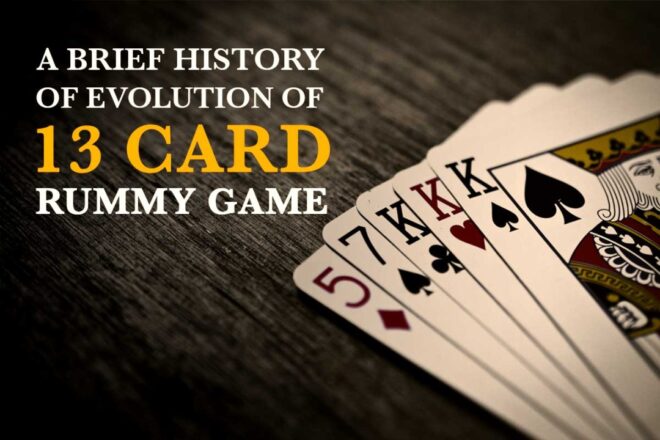Welcome to the world of Indian Rummy, a fascinating card game that demands strategic thinking and sharp memory. As you delve into this realm, you will uncover not just a game, but also a rich tapestry of history, culture, and intellectual engagement. The beauty of Rummy lies in its multiple variations with unique rulesets that add layers of complexity and intrigue to the gameplay. Whether you are a seasoned player or a novice seeking to understand the intricacies of this captivating pastime, exploring these various rules can be both an enlightening journey and an opportunity to elevate your play.
In this article, we will guide you through the labyrinth of different variations of rummy, from traditional gameplay mechanics to the intricate 21-card format. You’ll get insight into the role jokers play in tipping scales in your favor and discover strategies that could potentially catapult you towards victory. We aim to provide comprehensive knowledge about these variants while fostering a deeper appreciation for the strategic elements inherent in this game. So tighten your seat belts as we embark on a detailed exploration into the exciting world of Indian Rummy!
The card game Rummy has various variations that emerged from different cultures, each with their unique twist to the traditional gameplay. These include the 13-Card Rummy from India, Gin Rummy from North America, and others like Rumino, Tonk, Speed Rummy, and Three Thirteen. Each variant presents a fresh challenge, pushing players’ strategic thinking abilities.
Jokers play a crucial role in rummy, aiding in forming impure sequences or sets. Understanding when and how to use these jokers is pivotal for mastering different types of rummy. However, relying solely on Jokers isn’t advisable, as it may lead to missing out on forming potential runs with natural cards.
A Brief History of the Card Game

Delving into the rich tapestry of Rummy’s past, we’ll uncover how this timeless card game has captivated players across centuries and continents.
The origin of Rummy is shrouded in mystery, with its birthplace speculated to be Asia or Europe.
Regardless of where it began, what’s undeniable is that different variations of rummy have emerged from various cultures, each adding their distinctive twist to the traditional gameplay.
For instance, India gave rise to the 13-Card Rummy, while North America fostered Gin Rummy – both types of rummy displaying unique rules and objectives.
Now let’s consider some other intriguing rummy variants that have surfaced over time.
Rumino, Tonk, and Viennese Rummy are a few examples where strategy meets creativity in a fascinating interplay.
Speed Rummy focuses on quick decisions and rapid gameplay, which can be quite an adrenaline rush!
In contrast, Three Thirteen requires specific card combinations for victory – testing your analytical skills like never before.
It’s also worth mentioning Contract Rummy; here you need to meet certain pre-set objectives to win the round – talk about goal-oriented fun!
And then there are those rummy variation families that add even more variety: Melding Family includes games such as Conquian and Robber’s Rummy where discard melds play a significant role; Shanghai Rummy Jokers uses jokers uniquely; Canasta Family introduces partnership play with seven or eight cards being formed into melds.
Even within these categories exist further nuances that make every type of rummy stand out on its own merit.
Each variant offers a fresh twist, challenging your understanding of the game rules and pushing your strategic thinking ability.
So delve deep into discovering the many faces of this ancient yet ever-evolving game because remember – mastering all forms will prove your true prowess in Indian Rummy!
Traditional Indian Card Game Mechanics

In the heart of our traditional card games, mechanics play a key role in making each round more intriguing than the last.
Indian Rummy is no different; its core game rules are straightforward yet captivating, offering numerous strategies and playing styles to explore.
Whether you’re dealing with 13 cards or 21, every rummy variant brings a unique twist that keeps players on their toes.
Understanding these differences can greatly enhance your gameplay experience and give you an edge over opponents who stick to one style.
Now, let’s delve into some popular types of rummy played across India.
The classic 13-card rummy requires you to form sequences and sets from your hand before anyone else does so.
Then there’s Pool Rummy where stakes rise progressively, adding an extra level of excitement.
And if high-speed action appeals to you, try Deals Rummy – it’s all about winning maximum number of deals in minimum time.
Each rummy variation has its own intricacies and nuances which when mastered can significantly boost your chances of success.
So why not broaden your horizons?
Learn new tactics, refine old ones and discover what makes each type of rummy stand out from the rest.
Remember: versatility is king in the world of card games!
Experimenting with various forms will not only make you a well-rounded player but also keep things fresh and exciting for you as well as those around you at the table.
So go ahead – dive into this fascinating realm full of strategic depth and variety!
Diving Into 21 Card Gameplay

Ready to up your game? Let’s take a plunge into the thrilling world of 21 Card gameplay! This rummy variant is not only popular in India but also among players globally for its unique rule set and engaging gameplay.
In this version, each player starts with 21 cards instead of the traditional 13. The objective remains the same; creating valid sets or sequences using the given cards. However, there are some intricate rules that create an added layer of complexity. For instance, you can form a tunnela (three identical cards) or dublee (two pairs of identical cards). Understanding these nuances will give you an upper hand when playing against seasoned opponents.
In most types of rummy games, strategy plays a significant role, and it’s no different in 21 Cards Rummy. Herein lies the beauty and challenge – you must be nimble enough to adapt your plan based on the cards dealt at any given time while keeping track of what others might have in their hands. The key is to minimize points by forming valid combinations as quickly as possible. A good tip here is to always aim for pure sequences first before focusing on impure ones or other sets. Remember that too many high-value unmatched cards could cost you dearly!
As we delve deeper into various rummy variations like this one, it becomes clear why Indian rummy holds such mass appeal—there’s something for everyone! Whether you’re a beginner just starting out with Points Rummy or an experienced player navigating through Deals Rummy or Pool Rummy, every variation offers a distinct experience demanding focus, strategic thinking, and quick decision-making skills. So buckle down, keep practicing, and soon enough you’ll master all the intricacies involved in different types of rummy games.
The Role of Jokers in the Game

You’ve got a solid grip on the gameplay now, but let’s not forget about the jokers – they’re your secret weapon and can completely turn the tides in this strategic game.
In rummy variants, there are two types of Jokers; printed Joker from the deck and another card randomly selected at the beginning of the game that acts as a wild joker. These jokers play a crucial role in forming impure sequences or sets, giving you an edge over other players. The trick lies in using them wisely to make combinations that would otherwise be difficult with just natural cards.
Understanding when and how to use these jokers is pivotal for mastering different types of rummy. For instance, while playing 13 Card Rummy, it’s beneficial to utilize Jokers to form sets rather than sequences since priority is given to pure sequences.
On the contrary, in some rummy variations, like pool rummy, having more Jokers could lead towards point accumulation if one fails to declare their hand quickly. Therefore, recognizing the rules regarding Joker utilization specific to each rummy variation will enhance your overall strategy.
Moreover, learning how various seasoned players use their Jokers across different games can also enrich your understanding further and help improve your own strategies.
Remember though that relying solely on Jokers isn’t advisable because sometimes you might end up waiting for a Joker too long while missing out on forming potential runs with natural cards. So keep exploring through various rummy variants, acquaint yourself with diverse rule-sets concerning Jokers; understand their nuances within each type of rummy and always remember: even though luck plays its part, ultimately it’s skill and strategy that paves way for consistent wins!
Strategies for Winning the Game

Now let’s delve into some winning strategies that’ll help you make the most of your rummy game and give you an upper hand over your opponents.
Understanding different types of Rummy is one such strategy. Each rummy variation has its own unique set of rules, which can significantly influence how you play the game. For instance, in Indian Rummy, two Jokers are used and sequences must include at least one pure sequence without a Joker. Being familiar with these nuances enables you to adapt your gameplay according to the specific type of Rummy you’re playing.
Another key strategy involves carefully observing and analyzing your opponents’ moves. This allows you to anticipate their potential sets or sequences and plan your moves accordingly. In many rummy variants, discarding high-value cards early in the game can prevent other players from forming runs with those cards, thus minimizing their points if they win the round. Similarly, holding onto certain cards might deter others from discarding complementing cards for fear of assisting you in completing a run.
Lastly, never underestimate the importance of practice! The more games you play across various types of Rummy, the better equipped you become at formulating effective strategies tailored to each rummy variation.
Participating in cash games and tournaments not only provides opportunities for honing your skills but also exposes you to different styles of play from diverse players around India, increasing your understanding further.
So go ahead—embrace this exciting card game’s complexity as well as its fun nature—and soon enough, victory will be yours!
Conclusion
In conclusion, understanding variations in Indian Rummy and the different rule sets is essential for developing a comprehensive gameplay strategy.
It’s through this deep comprehension of game rules that you’ll truly master the art of Rummy.
Your analytical approach towards strategies can greatly influence your performance in both traditional and 21 card games.
So keep exploring, learning, and enjoying the rich diversity of India’s beloved card game – Rummy!



